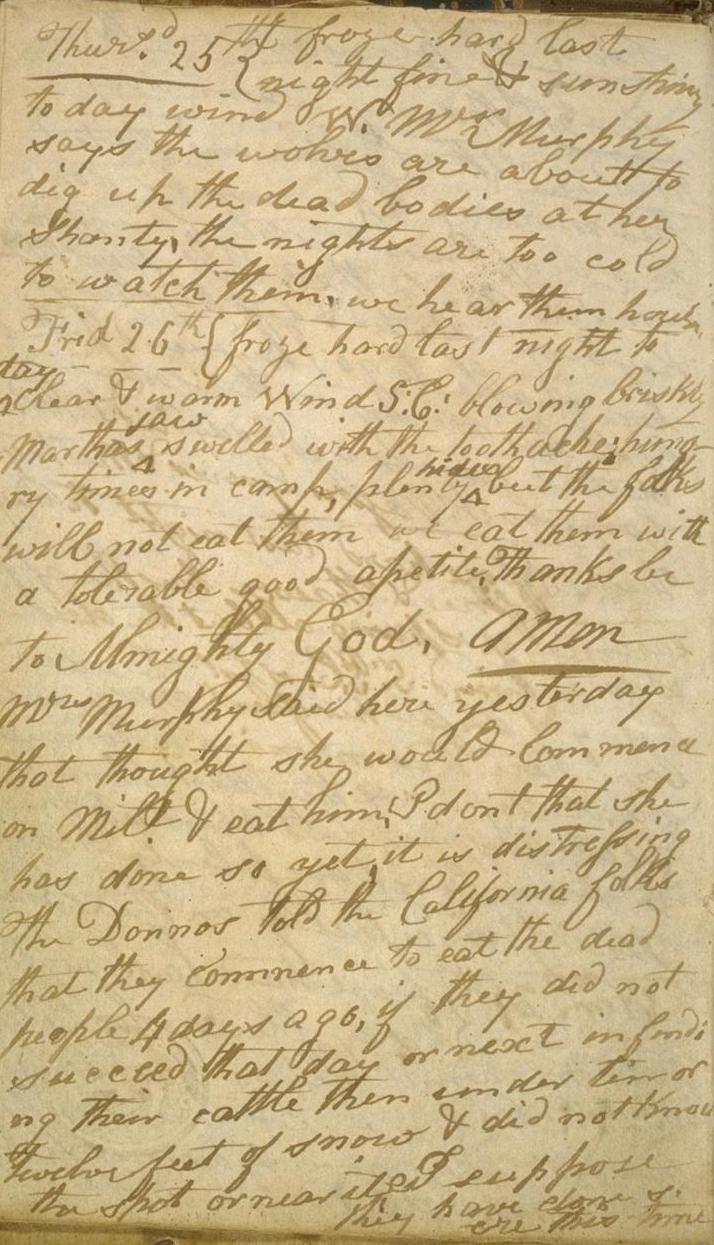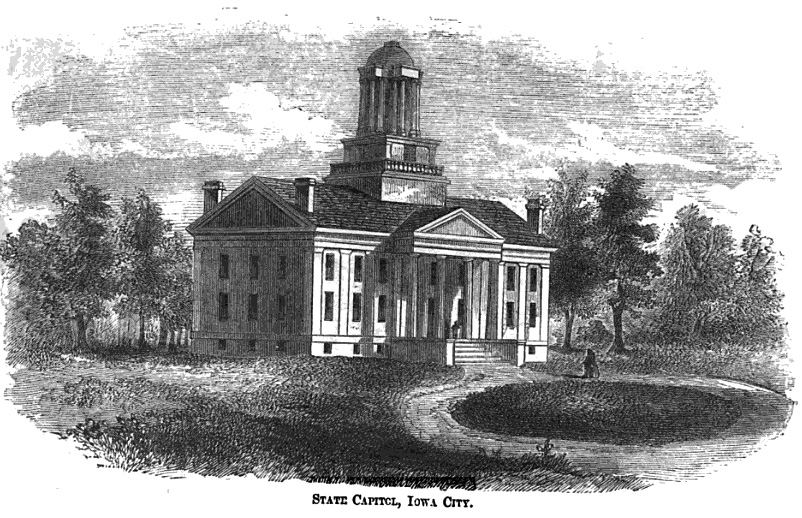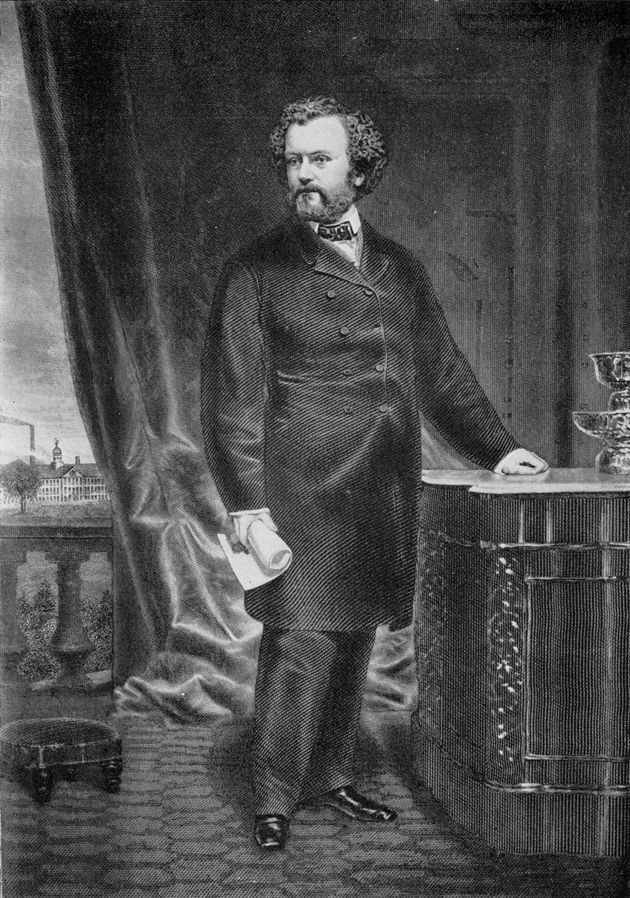|
1847
Events January–March * January 4 – Samuel Colt sells his first revolver pistol to the U.S. government. * January 13 – The Treaty of Cahuenga ends fighting in the Mexican–American War in California. * January 16 – John C. Frémont is appointed Governor of the new California Territory. * January 17 – St. Anthony Hall fraternity is founded at Columbia University, New York City. * January 30 – Yerba Buena, California, is renamed San Francisco. * February 5 – A rescue effort, called the First Relief, leaves Johnson's Ranch to save the ill-fated Donner Party (California-bound emigrants who became snowbound in the Sierra Nevada earlier this winter; some have resorted to survival by cannibalism). * February 22 – Mexican–American War: Battle of Buena Vista – 5,000 American troops under General Zachary Taylor use their superiority in artillery to drive off 15,000 Mexican troops under Antonio López de Santa Anna, defeating the Mexicans the next day. * February ... [...More Info...] [...Related Items...] OR: [Wikipedia] [Google] [Baidu] |
Mexican–American War
The Mexican–American War, also known in the United States as the Mexican War and in Mexico as the (''United States intervention in Mexico''), was an armed conflict between the United States and Second Federal Republic of Mexico, Mexico from 1846 to 1848. It followed the 1845 American annexation of Texas, which Mexico still considered its territory. Mexico refused to recognize the Treaties of Velasco, Velasco treaty, because it was signed by President Antonio López de Santa Anna while he was captured by the Texan Army during the 1836 Texas Revolution. The Republic of Texas was ''de facto'' an independent country, but most of its Anglo-American citizens wanted to be annexed by the United States. Sectional politics over slavery in the United States were preventing annexation because Texas would have been admitted as a slave state, upsetting the balance of power between Northern free states and Southern slave states. In the 1844 United States presidential election, Democrat ... [...More Info...] [...Related Items...] OR: [Wikipedia] [Google] [Baidu] |
Donner Party
The Donner Party, sometimes called the Donner–Reed Party, was a group of American pioneers who migrated to California in a wagon train from the Midwest. Delayed by a multitude of mishaps, they spent the winter of 1846–1847 snowbound in the Sierra Nevada mountain range. Some of the migrants resorted to cannibalism to survive, eating the bodies of those who had succumbed to starvation, sickness, and extreme cold. The Donner Party originated from Springfield, Illinois, and departed Independence, Missouri, on the Oregon Trail in the spring of 1846, behind many other pioneer families who were attempting to make the same overland trip. The journey west usually took between four and six months, but the Donner Party was slowed after electing to follow a new route called the Hastings Cutoff, which bypassed established trails and instead crossed the Rocky Mountains' Wasatch Range and the Great Salt Lake Desert in present-day Utah. The desolate and rugged terrain, and the difficulti ... [...More Info...] [...Related Items...] OR: [Wikipedia] [Google] [Baidu] |
Battle Of Buena Vista
The Battle of Buena Vista (February 22–23, 1847), known as the Battle of La Angostura in Mexico, and sometimes as Battle of Buena Vista/La Angostura, was a battle of the Mexican–American War. It was fought between the US invading forces, largely volunteers, under General Zachary Taylor, and the much larger Mexican Army under General Antonio López de Santa Anna. It took place near Buena Vista, a village in the state of Coahuila, about south of Saltillo, Mexico. ''La Angostura'' ("the narrow place") was the local name for the site. The outcome of the battle was ambiguous, with both sides claiming victory. Santa Anna's forces withdrew with war trophies of cannons and flags and left the field to the surprised U.S. forces, who had expected there to be another day of hard fighting. Background U.S. President James K. Polk had decided that an invasion into central Mexico via the Gulf Coast port of Veracruz would make the Mexicans come to the negotiating table. He told Major ... [...More Info...] [...Related Items...] OR: [Wikipedia] [Google] [Baidu] |
Zachary Taylor
Zachary Taylor (November 24, 1784 – July 9, 1850) was an American military leader who served as the 12th president of the United States from 1849 until his death in 1850. Taylor was a career officer in the United States Army, rising to the rank of major general and becoming a national hero for his victories in the Mexican–American War. As a result, he won election to the White House despite his vague political beliefs. His top priority as president was to preserve the Union. He died 16 months into his term from a stomach disease, thus having the third shortest presidency in U.S. history. Taylor was born into a prominent family of plantation owners who moved westward from Virginia to Louisville, Kentucky, in his youth; he was the last president born before the adoption of the Constitution. He was commissioned as an officer in the U.S. Army in 1808 and made a name for himself as a captain in the War of 1812. He climbed the ranks of the military, establishing military for ... [...More Info...] [...Related Items...] OR: [Wikipedia] [Google] [Baidu] |
Treaty Of Cahuenga
The Treaty of Cahuenga ( es, Tratado de Cahuenga), also called the Capitulation of Cahuenga (''Capitulación de Cahuenga''), was an 1847 agreement that ended the Conquest of California, resulting in a ceasefire between Californios and Americans. The treaty was signed at the Campo de Cahuenga on 13 January 1847, ending the fighting of the Mexican-American War within Alta California (modern-day California). The treaty was drafted in both English and Spanish by José Antonio Carrillo and signed by John C. Frémont, representing the American forces, and Andrés Pico, representing the Mexican forces. The treaty called for the Californios to give up their artillery, and provided that all prisoners from both sides be immediately freed. Those Californios who promised not to again take up arms during the war, and to obey the laws and regulations of the United States, were allowed to peaceably return to their homes and ranchos. They were to be allowed the same rights and privileges as we ... [...More Info...] [...Related Items...] OR: [Wikipedia] [Google] [Baidu] |
Antonio López De Santa Anna
Antonio de Padua María Severino López de Santa Anna y Pérez de Lebrón (; 21 February 1794 – 21 June 1876),Callcott, Wilfred H., "Santa Anna, Antonio Lopez De,''Handbook of Texas Online'' Retrieved 18 April 2017. usually known as Santa Anna or López de Santa Anna, was a Mexican politician and general. His influence on post-independence Mexican politics and government in the first half of the nineteenth century is such that historians of Mexico often refer to it as the "Age of Santa Anna". He has been called "the Man of Destiny", "a quintessential '' caudillo'' trongman. Although initially in the post-independence period he identified as a federalist and participated in a coup that ousted the conservatives in 1833, he became increasingly conservative. Elected President in 1833, López de Santa Anna declined to serve and retired to his home state and power base of Veracruz, a pattern that was to repeat itself until his ouster in 1855. López de Santa Anna's military and pol ... [...More Info...] [...Related Items...] OR: [Wikipedia] [Google] [Baidu] |
Faustin Soulouque
Faustin-Élie Soulouque (15 August 1782 – 3 August 1867) was a Haitian politician and military commander who served as President of Haiti from 1847 to 1849 and Emperor of Haiti from 1849 to 1859. Soulouque was a general in the Haitian Army when he was appointed President of Haiti. He acquired autocratic powers, purged the army of the ruling elite, installed black loyalists in administrative positions and the nobility, and created a secret police and private army. Soulouque was an enthusiastic '' vodouisant'', maintaining a staff of bokors and mambos, and gave the stigmatized vodou religion semi-official status which was openly practiced in Port-au-Prince. Soulouque declared the Second Empire of Haiti in 1849 after being proclaimed Emperor under the name Faustin I, and formally crowned in 1852. Several unsuccessful attempts to reconquer the Dominican Republic eroded his support and he abdicated in 1859 under pressure from General Fabre Geffrard and Dominican military vic ... [...More Info...] [...Related Items...] OR: [Wikipedia] [Google] [Baidu] |
State University Of Iowa
The University of Iowa (UI, U of I, UIowa, or simply Iowa) is a public research university in Iowa City, Iowa, United States. Founded in 1847, it is the oldest and largest university in the state. The University of Iowa is organized into 12 colleges offering more than 200 areas of study and seven professional degrees. On an urban 1,880-acre campus on the banks of the Iowa River, the University of Iowa is classified among "R1: Doctoral Universities – Very high research activity". In fiscal year 2021, research expenditures at Iowa totaled $818 million. The university is best known for its programs in health care, law, and the fine arts, with programs ranking among the top 25 nationally in those areas. The university was the original developer of the Master of Fine Arts degree and it operates the Iowa Writers' Workshop, which has produced 17 of the university's 46 Pulitzer Prize winners. Iowa is a member of the Association of American Universities, the Universities Research Ass ... [...More Info...] [...Related Items...] OR: [Wikipedia] [Google] [Baidu] |
Samuel Colt
Samuel Colt (; July 19, 1814 – January 10, 1862) was an American inventor, industrialist, and businessman who established Colt's Patent Fire-Arms Manufacturing Company (now Colt's Manufacturing Company) and made the mass production of revolvers commercially viable. Colt's first two business ventures were producing firearms in Paterson, New Jersey, and making underwater mines; both ended in disappointment. His business affairs improved rapidly after 1847, when the Texas Rangers ordered 1,000 revolvers during the American war with Mexico. Later, his firearms were used widely during the settling of the western frontier. Colt died in 1862 as one of the wealthiest men in America. Colt's manufacturing methods were sophisticated. His use of interchangeable parts helped him become one of the first to use the assembly line efficiently. Moreover, his innovative use of art, celebrity endorsements, and corporate gifts to promote his wares made him a pioneer of advertising, p ... [...More Info...] [...Related Items...] OR: [Wikipedia] [Google] [Baidu] |
California
California is a state in the Western United States, located along the Pacific Coast. With nearly 39.2million residents across a total area of approximately , it is the most populous U.S. state and the 3rd largest by area. It is also the most populated subnational entity in North America and the 34th most populous in the world. The Greater Los Angeles area and the San Francisco Bay Area are the nation's second and fifth most populous urban regions respectively, with the former having more than 18.7million residents and the latter having over 9.6million. Sacramento is the state's capital, while Los Angeles is the most populous city in the state and the second most populous city in the country. San Francisco is the second most densely populated major city in the country. Los Angeles County is the country's most populous, while San Bernardino County is the largest county by area in the country. California borders Oregon to the north, Nevada and Arizona to the ea ... [...More Info...] [...Related Items...] OR: [Wikipedia] [Google] [Baidu] |
Why Did The Chicken Cross The Road?
"Why did the chicken cross the road?" is a common riddle joke with the answer being, "To get to the other side." It is commonly seen as an example of anti-humor, in that the curious setup of the joke leads the listener to expect a traditional punchline, but they are instead given a simple statement of fact. The joke has become iconic as an exemplary generic joke to which most people know the answer, and has been repeated and changed numerous times over the course of history. History The riddle appeared in an 1847 edition of ''The Knickerbocker'', a New York City monthly magazine: There are ' quips and quillets' which ''seem'' actual conundrums, but yet are none. Of such is this: 'Why does a chicken cross the street? Are you 'out of town?' Do you 'give it up?' Well, then: 'Because it wants to get on the other side!' According to music critic Gary Giddins in the Ken Burns documentary ''Jazz'', the joke was spread through the United States by minstrel shows beginni ... [...More Info...] [...Related Items...] OR: [Wikipedia] [Google] [Baidu] |
Iowa City, Iowa
Iowa City, offically the City of Iowa City is a city in Johnson County, Iowa, United States. It is the home of the University of Iowa and county seat of Johnson County, at the center of the Iowa City Metropolitan Statistical Area. At the time of the 2020 census the population was 74,828, making it the state's fifth-largest city. The metropolitan area, which encompasses Johnson and Washington counties, has a population of over 171,000. The Iowa City Metropolitan Statistical Area (MSA) is also a part of a Combined Statistical Area (CSA) with the Cedar Rapids MSA. This CSA plus two additional counties are known as the Iowa City-Cedar Rapids region which collectively has a population of nearly 500,000. Iowa City was the second capital of the Iowa Territory and the first capital city of the State of Iowa. The Old Capitol building is a National Historic Landmark in the center of the University of Iowa campus. The University of Iowa Art Museum and Plum Grove, the home of the ... [...More Info...] [...Related Items...] OR: [Wikipedia] [Google] [Baidu] |







